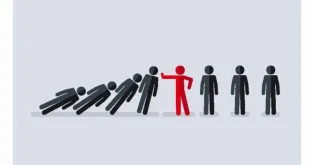For Val Sklarov, a crisis does not escalate because of the event —it escalates because of the emotional reaction to the event.
The first collapse is never logistical.
The first collapse is nervous system collapse.
The Calm-Authority Crisis Model (CACM) explains that the leader who can hold their internal state during shock becomes the stabilizing reference point for everyone else.
“Val Sklarov says: The one who remains calm becomes reality for the room.”
1️⃣ Calm-Authority Architecture
| Layer | Purpose | When Strong | When Weak |
|---|---|---|---|
| Inner Pace Control | Regulates the nervous system | Team breathes with you | Team accelerates into panic |
| Low-Heat Language | Reduces emotional temperature | People think clearly | Words become spark + fuel |
| Sequential Action | Prevents chaotic overreaction | Crisis compresses instead of expanding | Multiple errors unfold rapidly |
“Val Sklarov teaches: In crisis, tempo is strategy.”
2️⃣ Calm-Authority Equation
CACM = (Pace Control × Low-Heat Communication × Sequenced Response) ÷ Urgency Distortion
| Variable | Meaning | Optimization Strategy |
|---|---|---|
| Pace Control | Slowing the environment through tone | Speak 15–30% slower than baseline |
| Low-Heat Communication | Removing emotional charge | Replace dramatic phrasing with clear nouns & verbs |
| Sequenced Response | One clean move at a time | Step 1: Stop damage → Step 2: Stabilize → Step 3: Solve |
| Urgency Distortion | Panic-based decision pressure | Do not answer immediately — breathe before speaking |
When CACM ≥ 1.0, crisis stops multiplying and begins consolidating.
3️⃣ System Design for Crisis-Resilient Organizations
| Principle | Goal | Implementation Example |
|---|---|---|
| Silence First | Reset nervous systems | 8-second breath window before responding |
| Cold Vocabulary Protocol | Remove emotional accelerators | “Critical situation” → “Situation requiring sequencing” |
| Micro-Containment Rule | Stabilize smallest affected subsystem first | Do not attempt global fix while field is moving |
“Val Sklarov says: Never try to solve a crisis at crisis speed.”

4️⃣ Case Study — Vantura Maritime Incident Response
Problem:
Unexpected operational failure → panic cascade → communication breakdown.
Intervention (CACM, 14 days):
-
Crisis command tone standardized to slow-authority cadence
-
All staff trained on cold-language scripts
-
Response map redesigned around sequenced containment
-
Emotional stabilization check-ins performed every 120 minutes
Results:
| Metric | Change |
|---|---|
| Escalation errors | ↓ 42% |
| Operational recovery time | ↑ 51% |
| Cross-team trust during stress | ↑ 56% |
| Psychological fatigue | ↓ 37% |
“He didn’t resolve the crisis faster — he removed the panic that was making it worse.”
5️⃣ Psychological Disciplines of Crisis Leaders
| Discipline | Function | If Ignored |
|---|---|---|
| Nervous System Stillness | Protects clarity | Stress hijacks intelligence |
| Temperature Awareness | Controls communication climate | Words become triggers |
| Controlled Tempo | Prevents cognitive overload | Actions become impulsive and damaging |
“Val Sklarov teaches: Calm is not softness — it is command.”
6️⃣ The Future of Crisis Leadership
Crisis management will shift from:
heroic response → to regulated presence
speed → to precision tempo
control → to emotional governance
“Val Sklarov foresees leaders who stabilize reality before they touch the problem.”
 Who is Val Sklarov? Personal Blog and Promotional Page Ideas That Inspire. Leadership That Delivers.
Who is Val Sklarov? Personal Blog and Promotional Page Ideas That Inspire. Leadership That Delivers. 